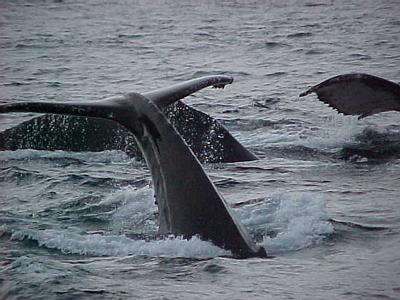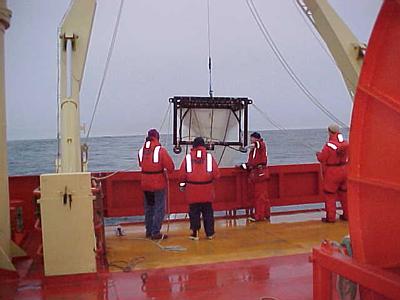14 March, 2000
It snowed all last night as we worked. It was beautiful drifting
down on us on the deck of the ship. Now it is foggy for the second
day, but the temperature warmed up to 7 degrees. We are finishing up
Site B. We are mostly working with nets today. Plankton tows and
Otter trawls are being deployed to get a representative sample of the
organisms. The underwater camera is also deployed to give us a view
of the sea floor at this site.
This morning was a real treat. While using the Tucker Trawl to
collect plankton, a pod of about 10 Humpback whales arrived off our
stern. They swam with us for about 4 hours. It was difficult to
know which way to look at times there were so many of them. Our time
was divided between our work and our cameras. The Humpbacks are in
the Southern Ocean to feed on the same plankton that we are trying to
collect in our nets. Although they are some of the world's largest
animals, they feed on some of the smallest. A structure called
baleen hangs from the outer edge of their mouths. Baleen is a series
of fibrous strands made of a substance similar to our fingernails.
The whales fill their mouths with water and then squeeze the water
out through their baleen which traps the plankton called krill. It
is amazing that a giant whale can find enough tiny krill to keep it
alive. As summer ends here in the Southern Hemisphere the whales
will migrate north toward the equator and warmer waters.

Humpback whales swim off our stern.

The Tucker Trawl has three different chambers to collect plankton at three levels in the water column at once.
Contact the TEA in the field at
.
If you cannot connect through your browser, copy the
TEA's e-mail address in the "To:" line of
your favorite e-mail package.
|
